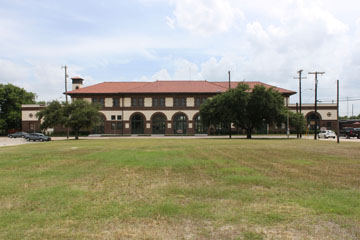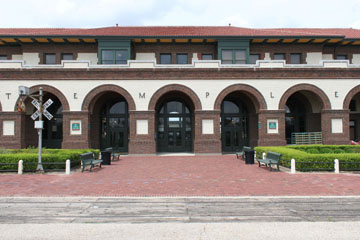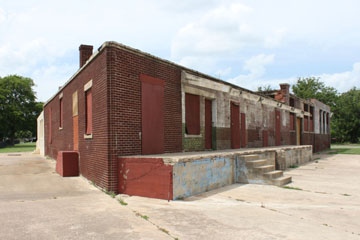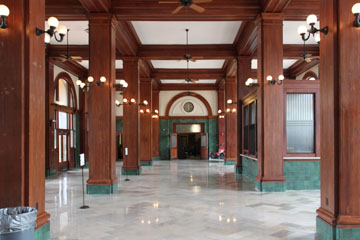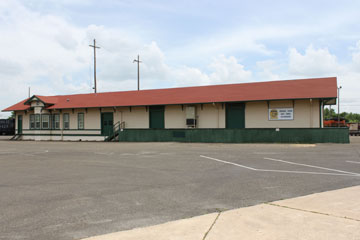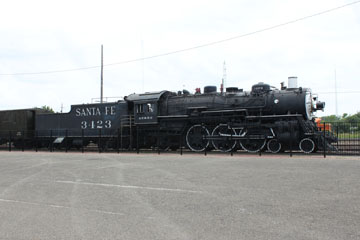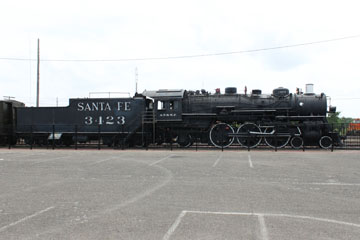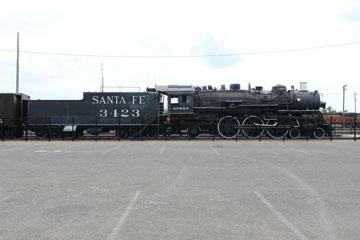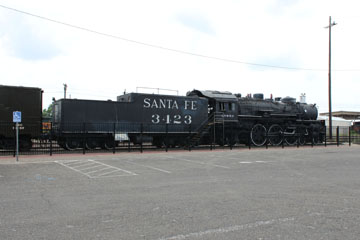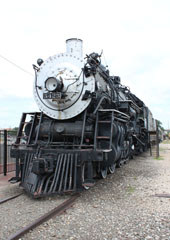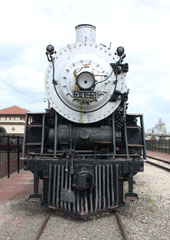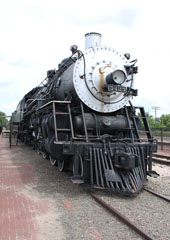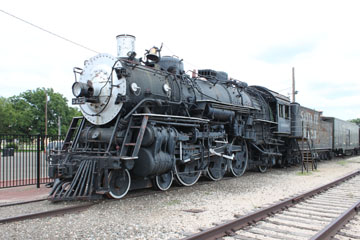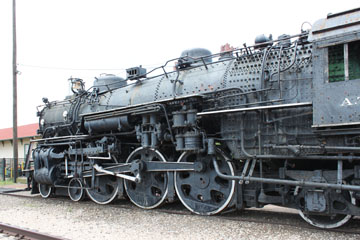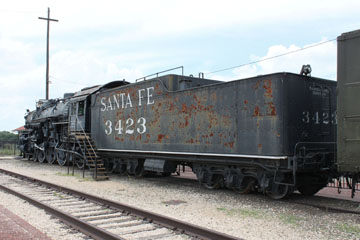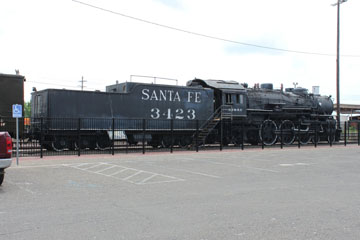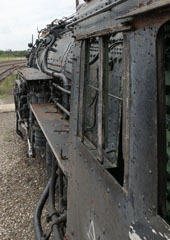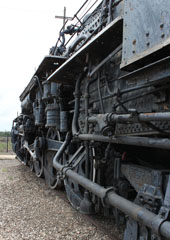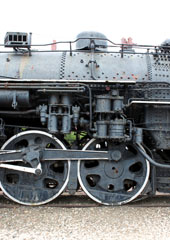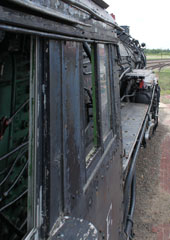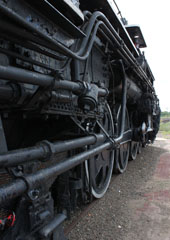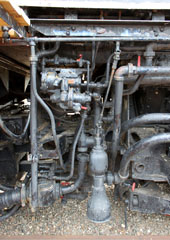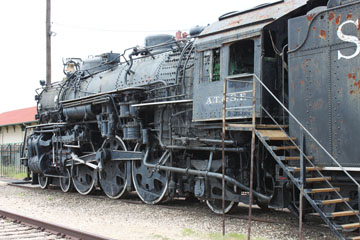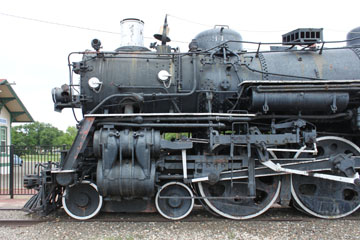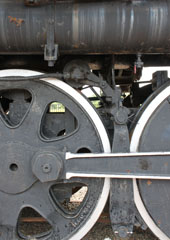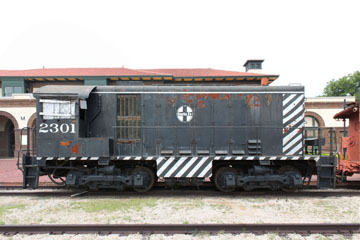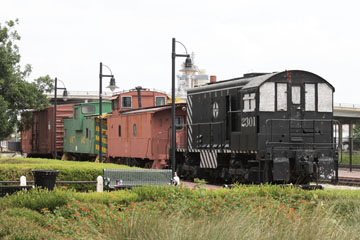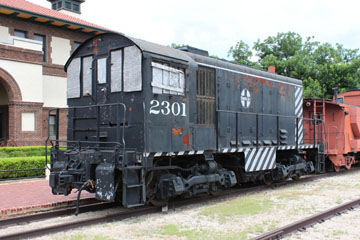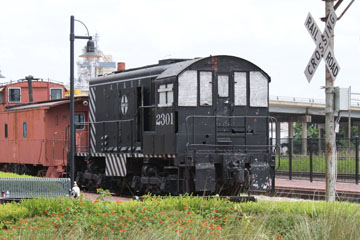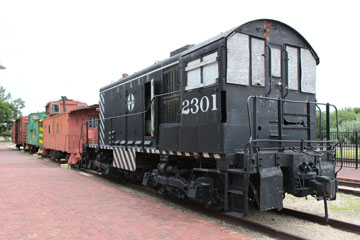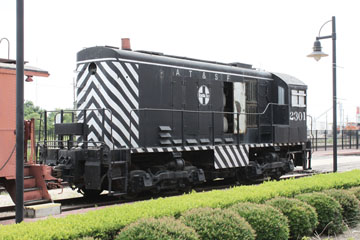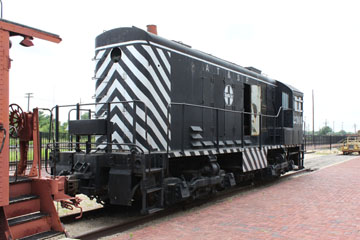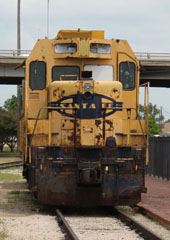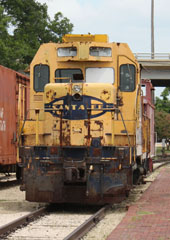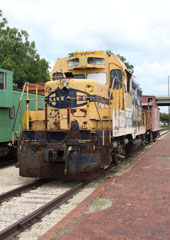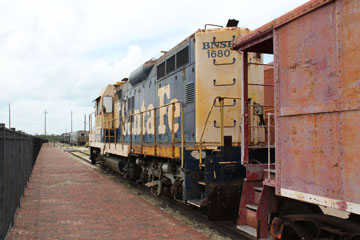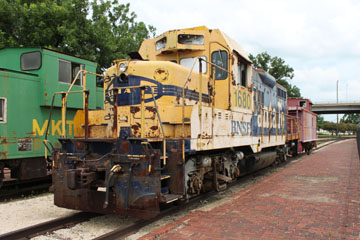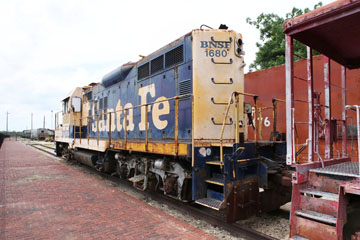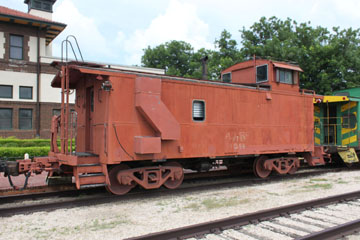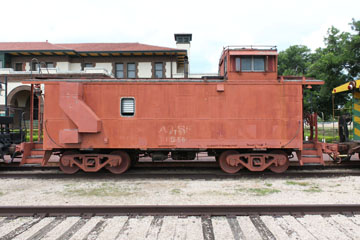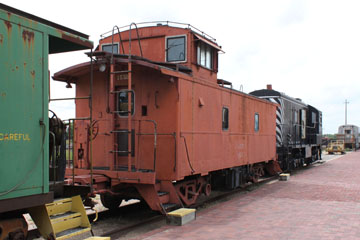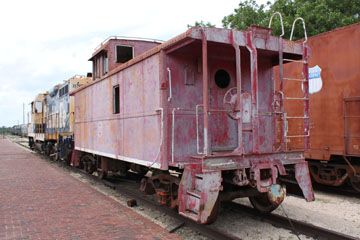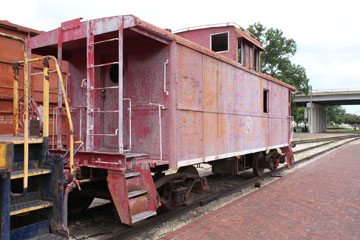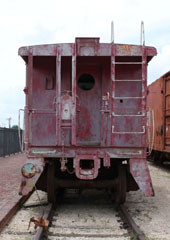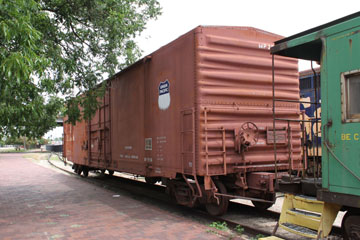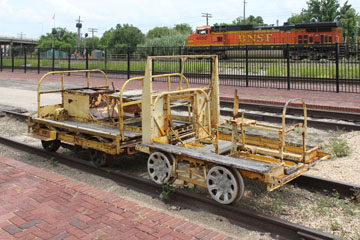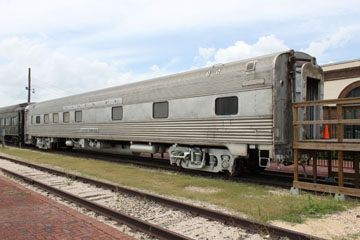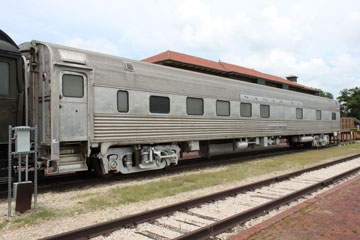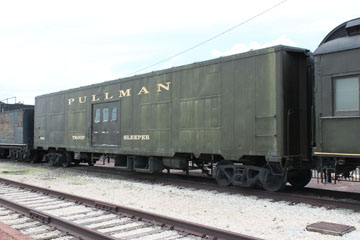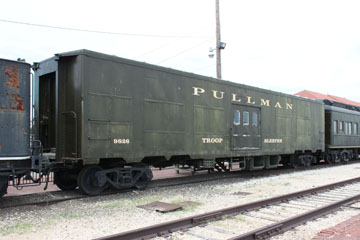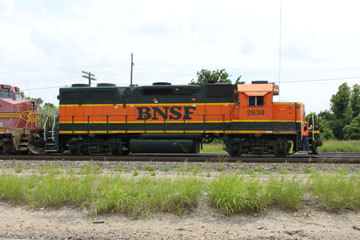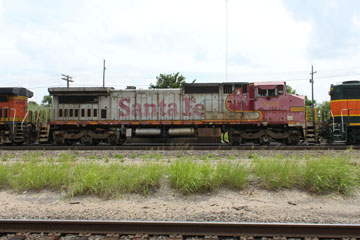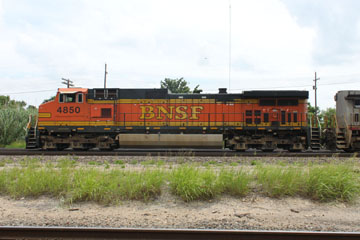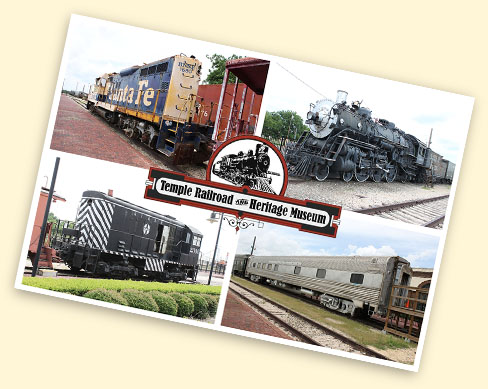

The Temple Railroad and Heritage Museum was founded in 1973 to collect, preserve and exhibit the history of the railroads and local history of Central Texas.
The original collection was housed in the 1907 Gulf, Colorado & Santa Fe depot in Moody, TX. In 1996, an Intermodal Surface Transportation Efficiency Act grant for renovating the Temple Santa Fe depot, which had been vacated by the railroad and was destined for demolition, was applied for and received. Three years later, in 1999, work on the restoration began. Dedication of the restored depot took place on July 8, 2000, and this beautifully restored building is now the home of the museum. It is located next to an active railroad yard, where railfans can take in the operations and traffic of the BNSF and Amtrak.
The museum’s collection of railroad equipment is displayed on the grounds, including three locomotives, railroad passenger cars and cabooses. Restoration work on this rolling stock collection is ongoing, and the museum also regularly hosts changing temporary exhibits and educational programmes.

The depot at Temple, an example of Prairie-Beaux Arts architecture completed in 1911, served as the Southern Division headquarters for the Gulf Colorado & Santa Fe, the AT&SF subsidiary in Texas. The depot still serves as a stop for Amtrak's Texas Eagle.
Other buildings related to activity at the site have survived, including, below, the freight house. Bottom photo, the old depot building has been relocated to the site from Moody and is now
home to the Central Texas Area Model
Railroaders.

Under Purcell, the Santa Fe started buying large groups of simple, two cylinder locomotives, such as the 4-6-2, 2-8-2 and 2-10-2. They lacked most modern appliances as Purcell believed the added efficiencies offered by such appliances were just not worth the extra maintenance costs.
#3423 was one of a batch of ten oil burning
3400s built in 1921 at a cost of $61,927.08 each.
The engine wheelbase is 35' 3", the driver wheelbase 13' 8". The 253,720 lb tender has a capacity of 20,000 gallons of water and 7,000 gallons of oil.
Fifty 3400 class Pacific type (4-6-2) locomotives were built from 1919 to 1924 by Baldwin for the AT&SF (#3400-#3449).
Designed by John Purcell, who became the AT&SF's head of motive power in 1912, they were the last Pacifics bought by the Santa Fe. Purcell brought an end to a period of experimentation by the AT&SF during the early years of the 20th century, which included balanced compounds, "Vauclain accordion flexible smoke box" 2-6-6-2s with hinged boilers, articulated 4-4-6-2s and even ten 2-10-10-2s.
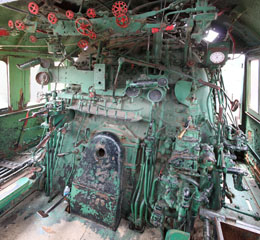
The 3400s were built with 74" drivers but, from 1935 to 1941, the AT&SF rebuilt them as oil burners with 79" Boxpok drivers turning in Timken roller bearings and thicker main rods.
A Commonwealth cast-steel bed with integral cylinders supported higher axle loadings. As well as installing Elesco feedwater heaters, AA security circulators were added to the firebox, which also included a short combustion chamber raising it from 269 sq ft to 329.6 sq ft. Total heating surface dropped from 5,089 sq ft to 4,246 sq ft, including 917 sq ft superheating.
The rebuild increased the engine weight from 300,950 lbs to 338,900 lbs, and from 179,550 lbs on its drivers to 205,100 lbs. Boiler pressure was increased from 200 psi to 220 psi and tractive effort increased from 40,203 lbs to 41,424 lbs.

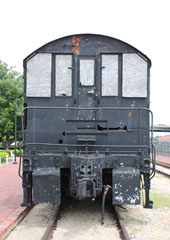
Built in 1937, this is the oldest surviving AT&SF diesel, and is nearly identical to the Santa Fe's very first diesel locomotive, #2300, bought in 1934. Both were in the HH series
of switchers built by Alco in Schenectady, NY.
The first HH series, demonstrator #600, was built in 1931. After demonstration on a number of railroads, the unit was sold to the New York, New Haven & Hartford who numbered it #0900. Seventy-eight HH-600s were outshopped between 1932 and 1940, Alco’s first diesel switchers to enter true series production.
After retiring in 1964, #2301 was sold to Palo Duro Grain. By 1970, it was working for Tulia Grain at Tulia, TX, on the AT&SF line from Lubbock to Amarillo, TX, still painted in its zebra stripe paint scheme, although all Santa Fe markings had been painted out. By 1992, #2301 had been pushed out to a side line, its duties having been taken over by an EMD switcher.
It was rescued and cosmetically restored to AT&SF colours by the museum. It had originally been planned to make the unit operational, but the cost proved prohibitively high.
"HH" stood for "High Hood", not originally an official name, but one that Alco eventually came to use.
The first units had sharp-edged front hood
corners but, in 1934, Alco employed industrial designer Otto Kuhler to redesign the
appearance. He curved the corners and
recessed the headlight, and all subsequent HH series units were of this style until another restyling in 1938 when the nose was further rounded. Alco went on to produce HH-660, HH-900 and HH-1000 series.
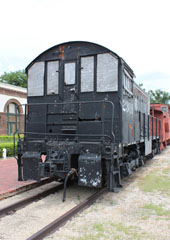
Weighing 206,120 lbs and 43’ 5” long, #2301 has a McIntosh & Seymore 4-cycle Model 531 6L prime mover powering a GE GT 526/551A1 generator to drive four GE 287D/E traction motors, one on each axle. It delivered starting tractive effort of 59,700 lbs at 25% and 28,000 lbs continuous tractive effort at 4.8 mph with a top speed of 40 mph.
Not many of the Alco HH series have been preserved. You can see an example of the 1,000 hp model, Olicver Mining Co., #900 on the Lake Superior Railroad Museum page of this website.

This unit started life as AT&SF GP9 #742, built
by EMD in 1957. It was renumbered #2942 in
1970 and rebuilt at Cleburne, TX, in 1980 as
#2296. It became BNSF #1680 in November
1999. The GP9 was delivered with a high short hood and rounded cab. #1680 was one of the AT&SF GP9s rebuilt with low short hoods and angled cabs with air conditioners and reclassified as a GP9u.
At some point, #1680 experienced frame damage from a wreck and then spent several months being "parted out" at the Temple Roundhouse.
Weighing 249,000 lbs and 56' 2" in length, #1680 has an EMD 567C 16 cylinder prime mover powering a GM D12B generator to drive four GM D37 traction motors, one on each axle, producing starting tractive effort of 62,750 lbs at 25% and 44,600 lbs continuous tractive effort at 9.3 mph with a top speed of 65 mph.
A good number of GP9s have survived. You can see more on the Virginia Museum of Transportation page of this website, the North Carolina Transportation Museum page and the Belton, Grandview & Central City Railroad page.
Once everything serviceable had been removed, the unit was donated to the museum.
EMD built three thousand, four hundred and sixty-six, four hundred and sixty-six 1,750 hp GP9 units at its La Grange, IL, plant between 1954 and 1959 for US railroads and twenty-five for other countries. One hundred and sixty-nine cabless GP9B units were also produced. Six hundred and forty-six were built for Canadian railroads by GMD in Canada. After US production ended, an additional thirteen units were built by GMD, including the last two in August 1963.

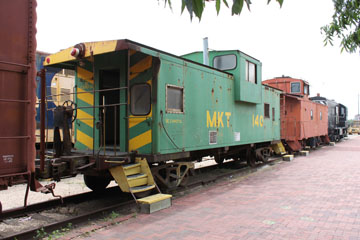
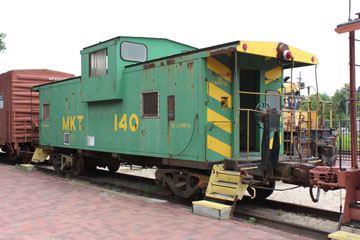
There are various other pieces of equipment on display at the museum.
Left, Atchison, Topeka & Santa Fe Ce-2 Steel Caboose #1556 was built by the American Car & Foundry based in St. Charles, MO, in 1927 as AT&SF Class Ce-1 #1556. It was rebuilt in San Bernardino, CA, in 1969 as Class Ce-2 #999324. Retired in 1988 it has been returned to its original number by the museum. Above, Missouri, Kansas & Texas #140, another steel caboose was built by the International Car Company in Kenton, OH, in 1966.
There are three cars behind AT&SF #3423.
Top, AT&SF "Pine Mesa". Built by Budd as AT&SF #2726, this ten roomette and six double bedroom sleeper car became AMTK #2986. Left, Pullman sleeper "Clover Glade" was built in 1913 and ran in service on the MKT line. Bottom, Pullman troop sleeper #9826. In late 1943, the US Office of Defense Transportation contracted the Pullman Company to build two thousand four hundred of these troop sleepers. They were converted from existing boxcars or built from scratch based on ARR standard 50' 6" steel boxcar designs.

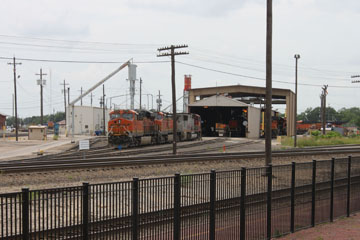
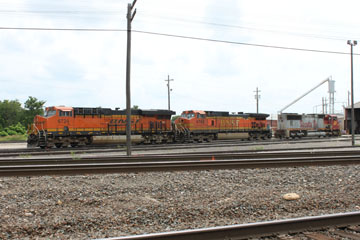
There is an active BNSF service facility
immediately opposite the museum and quite a bit of action to be seen. Above, BNSF GE ES44AC
#6724, BNSF GE C44-9W #4765 and BNSF EMD SD75M #237 wearing the Santa Fe "Warbonnet" paint scheme stand outside the service shed. Left, BNSF EMD GP30 #2838, BNSF GE C40-8W #869, also in the Santa Fe "Warbonnet" scheme, and BNSF GE C44-9W #4850 passing through the
yard.
Click this link to see a video of #2838, #869
and #4850 passing through Temple yard.


